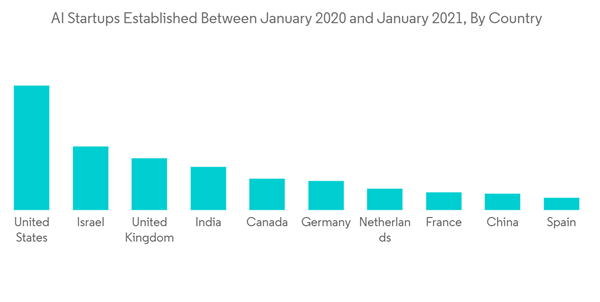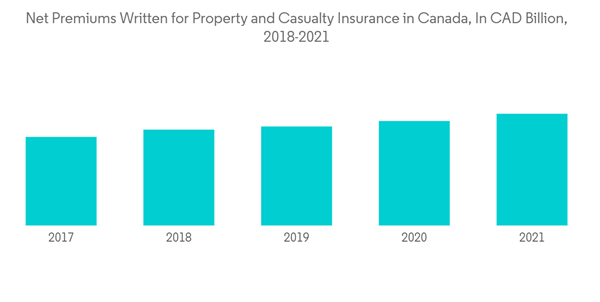In 2020, private Canadian insurers registered revenue of CAD 71.0 billion in direct written premiums (CAD 62.8 billion in net written premiums) for insurance on consumers’ homes, cars, and businesses. Out of the CAD 62.8 billion in net written premiums, 42.9% was for one line of business: automobile, including commercial vehicle insurance, personal property, commercial property, and liability.
COVID-19 have affected the earnings of individual P&C insurers unevenly, but the industry’s overall capital base reached the unparalleled height during the first three quarters of 2020.
Specialized lines of insurance, such as boiler and machinery, marine and aircraft, and surety and fidelity, make up about 7.4% of the business.
In 2020, auto insurance, which is required by law in every Canadian province and territory, accounted for approximately half the insurance business written by P&C (Property and casualty) insurers. About 192 private P&C insurance companies are competing for the auto insurance business in Canada. In addition to these private insurers, government-owned insurers in British Columbia, Saskatchewan and Manitoba provide the mandatory component of auto insurance in those provinces, in addition to some optional coverages. In Quebec, a portion of the mandatory component is provided by the government-owned insurer and the other portion by private insurers.
Non-life insurers increasingly use AI and machine learning across customer-facing and back-end applications. The objective is to better assess risks in underwriting, strengthen fraud detection, improve customer experiences, and reduce operating overhead. While P&C insurers have been slower to digitize, telematics use has picked up sharply. Similarly, mobile applications and web portals are more commonly used by brokers and consumers for efficient claims submission and processing. Ultimately, these technologies help reduce administrative overhead and improve the customer experience.
Net written premium is increasing Y-o-Y. Most of the premium was received from auto insurance, which nearly contributed 43.3% to the net written premium. This is expected to increase further in the coming years. The government is planning to change the auto insurance policies, as vehicles with fully automated capabilities are expected to launch in Canada. In 2019, out of the total net premium written, personal property’s share was 22.3%, commercial property was 14.6%, liability was 10.1%, specialized was 7.4%, and accident and sickness was 2.3%.
The report covers the major players operating in the property and casualty insurance market in Canada. The market is consolidated, and it is expected to grow during the forecast period, due to several factors that are driving the market.
This product will be delivered within 2 business days.
COVID-19 have affected the earnings of individual P&C insurers unevenly, but the industry’s overall capital base reached the unparalleled height during the first three quarters of 2020.
Specialized lines of insurance, such as boiler and machinery, marine and aircraft, and surety and fidelity, make up about 7.4% of the business.
In 2020, auto insurance, which is required by law in every Canadian province and territory, accounted for approximately half the insurance business written by P&C (Property and casualty) insurers. About 192 private P&C insurance companies are competing for the auto insurance business in Canada. In addition to these private insurers, government-owned insurers in British Columbia, Saskatchewan and Manitoba provide the mandatory component of auto insurance in those provinces, in addition to some optional coverages. In Quebec, a portion of the mandatory component is provided by the government-owned insurer and the other portion by private insurers.
Key Market Trends
Increase in Adoption of Artificial Intelligence in Property and Casualty Insurance
Non-life insurers increasingly use AI and machine learning across customer-facing and back-end applications. The objective is to better assess risks in underwriting, strengthen fraud detection, improve customer experiences, and reduce operating overhead. While P&C insurers have been slower to digitize, telematics use has picked up sharply. Similarly, mobile applications and web portals are more commonly used by brokers and consumers for efficient claims submission and processing. Ultimately, these technologies help reduce administrative overhead and improve the customer experience.
Year-on-Year Increase in Net Written Premium
Net written premium is increasing Y-o-Y. Most of the premium was received from auto insurance, which nearly contributed 43.3% to the net written premium. This is expected to increase further in the coming years. The government is planning to change the auto insurance policies, as vehicles with fully automated capabilities are expected to launch in Canada. In 2019, out of the total net premium written, personal property’s share was 22.3%, commercial property was 14.6%, liability was 10.1%, specialized was 7.4%, and accident and sickness was 2.3%.
Competitive Landscape
The report covers the major players operating in the property and casualty insurance market in Canada. The market is consolidated, and it is expected to grow during the forecast period, due to several factors that are driving the market.
Additional Benefits:
- The market estimate (ME) sheet in Excel format
- 3 months of analyst support
This product will be delivered within 2 business days.
Table of Contents
1 INTRODUCTION
4 MARKET INSIGHTS AND DYNAMICS
5 MARKET SEGMENTATION
6 COMPETITIVE LANDSCAPE
Companies Mentioned (Partial List)
A selection of companies mentioned in this report includes, but is not limited to:
- Intact Group
- Aviva Group
- Desjardins Group
- Co-operators Group
- TD Insurance Group
- Wawanesa Mutual Insurance Company
- RSA Group
- Economical Group
- Travelers Group
- Northbridge Group*
Methodology

LOADING...










